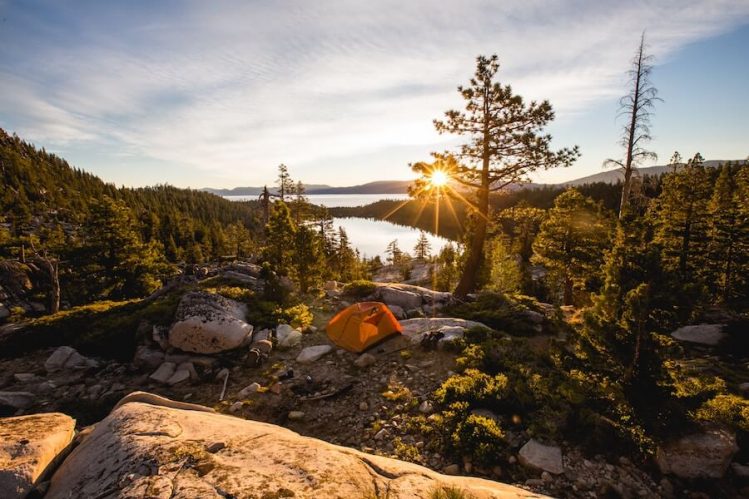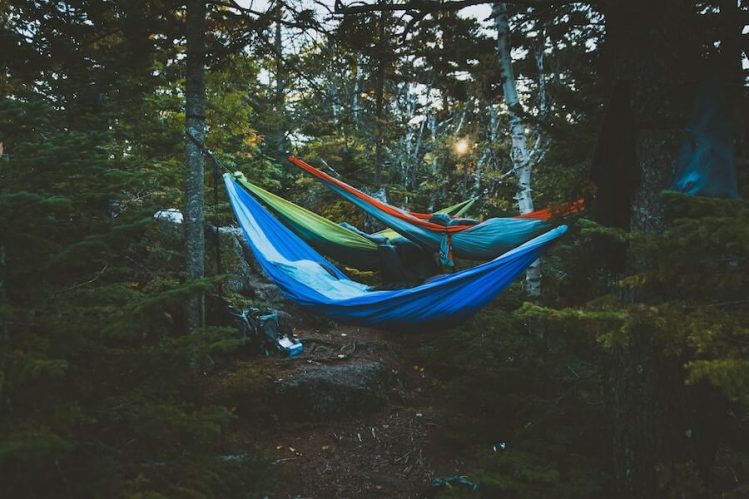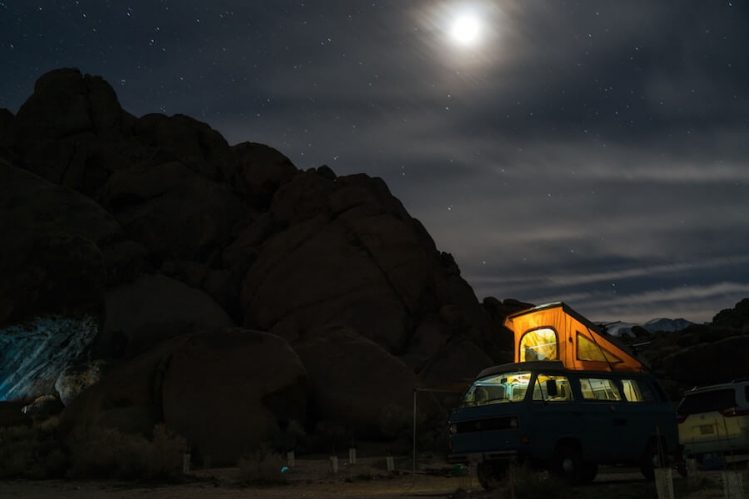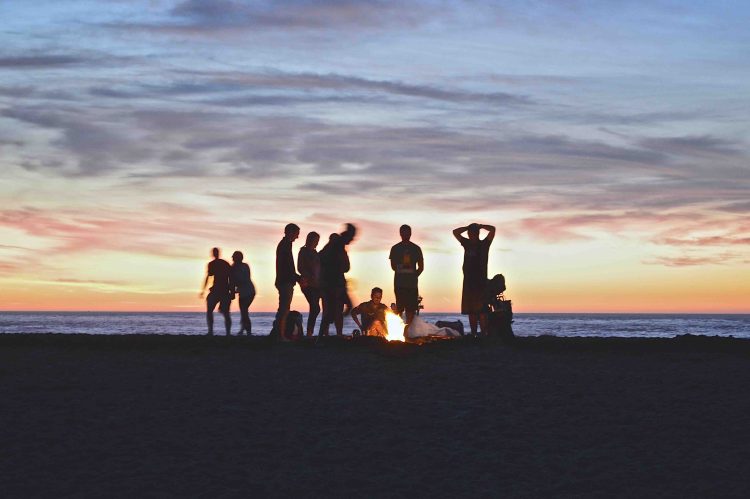by Anna Hider | You also might be able to find a city/county park with free camping; often, these places will advertise this. Wherever you plan to stay, do as much research online in advance as you can. You can get tips on what amenities a site may or may not have, how crowded it might be, etc. (Image: Sayan Nath on Unsplash)
Knowing how to camp for free…… it’s pretty much the ultimate road trip hack. Between gas, food, and admission to attractions along the way, travel isn’t cheap. Finding ways to make your money go further means your trip can go a little further, too. Free camping might not be the most glamorous option, but it’s got a certain “romance of the open road” appeal to it. Here’s our advice on how to camp for free….. anytime, anywhere.

How to Find Free Campsites
Knowing which public lands allow free camping makes finding a free campsite a heck of a lot easier. The website freecampsites.net has some really great guidelines on which public lands allow dispersed camping (camping anywhere on public lands, outside of a campsite). Bureau of Land Management lands and Forest Service lands, for the most part, allow dispersed camping for up to 14 days. Wildlife Management Areas also often allow it, but check and make sure that you don’t need a permit/there are no restrictions. Remember to keep an eye out for “no camping signs”, too. National Parks are often too crowded to allow dispersed camping, but some (like Congaree National Park) allow back-country/dispersed camping– check whether or not you need to obtain a free permit. You might luck out and find out that the park where you’re staying has a free, developed campsite. Check the BLM and Forest Service websites to find those. You might need to do some hiking, but it’s well worth it.
Parks, campgrounds & public lands that offer free camping on Roadtrippers
You also might be able to find a city/county park with free camping; often, these places will advertise this. Wherever you plan to stay, do as much research online in advance as you can. You can get tips on what amenities a site may or may not have, how crowded it might be, etc. And if you’re planning on tent camping, double and triple check that you have everything you need. Often these free campsites are pretty far off the grid, and finding a place with supplies might be a pain.

How to Camp For Free… in a Parking Lot
You’ve probably heard that you can camp overnight in the parking lot of a Walmart. Or Cracker Barrel. Or some other business/type of place. While it’s true that you can spend the night in a parking lot for most of these businesses, some states have laws and restrictions around this. Again, check online for what information you can find, and if all else fails, check with management before setting up camp. Remember that you have to stay in your car if you plan on staying in a parking lot (you can’t exactly have a tent and a campfire in a Walmart parking lot). It might not be the most comfortable option, but it’s a good backup plan to keep in mind.

Other Considerations
Some free campsites might not come with bathrooms… and if it does, they might not be bathrooms that you want to use. It’s not hard to find a McDonald’s or a slightly more clean gas station to use, but showering is a whole other ballgame. Truck stops are one option, or you might want to splurge on a nicer campsite if you start to feel kind of funky. Or, there’s the old-school option: Go for a swim! Lots of van-lifers take a dip in a lake, river, or even in the ocean each morning to freshen up.

A lot of these campsites have zero amenities. Not even a picnic table or a trash can. Plan to bring your own water, a trash bag for your garbage, and maybe some picnic chairs. Don’t plan on being able to have a campfire; research restrictions, permits, and advanced fire safety skills. You might not have cell service, so don’t expect to rely on your phone’s GPS. Paper maps are good to have, just in case.
 Anna Hider is a Civil War beard enthusiast, content/social on Facebook and aspiring astronaut reaching for the stars.
Anna Hider is a Civil War beard enthusiast, content/social on Facebook and aspiring astronaut reaching for the stars.